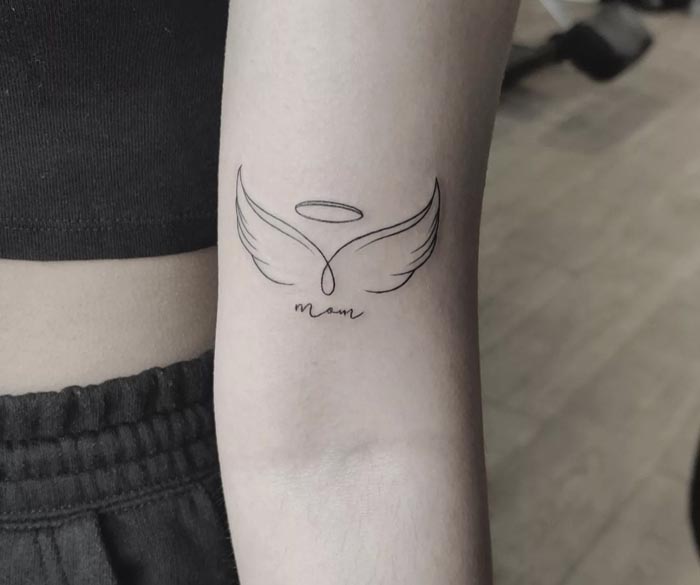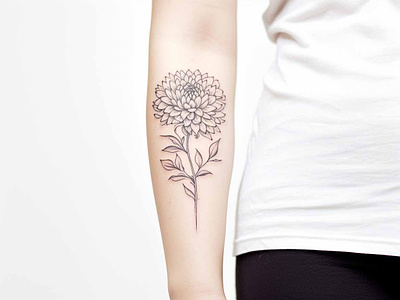Fast Fashion vs. Sustainable Fashion: Which One Should You Choose?
In recent years, the fashion industry has faced a growing debate between fast fashion and sustainable fashion. As consumers become more environmentally conscious, the question of whether to buy fast fashion or opt for sustainable alternatives is more relevant than ever. For those looking to save money on their fashion choices, CouponXoo offers various deals on both fast fashion and sustainable fashion brands. But understanding the pros and cons of each will help you make better choices, both for your wardrobe and the planet.
What is Fast Fashion?
Definition and Overview: Fast fashion refers to the quick production and rapid turnover of inexpensive clothing that mimics current fashion trends. Popular brands such as Zara, H&M, and Forever 21 are known for their ability to produce trendy items at a low cost, allowing consumers to purchase the latest styles without breaking the bank. The idea is to get the trend from the runway to the store as quickly as possible.
Characteristics of Fast Fashion:
-
Affordability: Fast fashion is known for its low prices, making it accessible to the masses.
-
Quick Turnover: New styles are often released weekly or even daily.
-
Trend-Driven: The focus is on capturing the latest fashion trends and making them available quickly.
-
Disposable Nature: Due to lower quality, fast fashion garments tend to have a shorter lifespan.
Pros of Fast Fashion:
-
Affordability: Fast fashion is extremely budget-friendly, allowing consumers to buy more clothing at lower prices.
-
Trend Accessibility: Fashionistas can get their hands on the latest trends without spending a fortune.
-
Variety: Fast fashion retailers offer a wide variety of styles and designs, catering to different tastes and occasions.
Cons of Fast Fashion:
-
Environmental Impact: The production of fast fashion is linked to high levels of pollution, waste, and carbon emissions.
-
Poor Labor Practices: Many fast fashion brands have been criticized for exploiting cheap labor in developing countries, leading to unsafe working conditions and unfair wages.
-
Low Quality: Fast fashion garments are often made from cheap materials, resulting in lower durability and contributing to waste.
What is Sustainable Fashion?
Definition and Overview: Sustainable fashion is an approach that emphasizes ethical production methods, eco-friendly materials, and a focus on durability. Brands such as Patagonia, Reformation, and Everlane prioritize sustainability, transparency, and social responsibility throughout their production processes. The goal is to reduce the fashion industry’s negative impact on the environment while promoting fair labor practices.
Characteristics of Sustainable Fashion:
-
Eco-Friendly Materials: Sustainable fashion brands often use organic cotton, recycled fabrics, and natural dyes.
-
Ethical Production: These brands focus on providing fair wages, safe working conditions, and minimizing environmental impact.
-
Longevity: Sustainable clothing is designed to last longer, reducing the need for frequent replacement.
-
Transparency: Many sustainable fashion brands offer full transparency about their supply chains and production processes.
Pros of Sustainable Fashion:
-
Environmental Benefits: Sustainable fashion reduces waste, pollution, and carbon emissions, making it a more eco-friendly choice.
-
Higher Quality: Sustainable garments are typically made with better materials and craftsmanship, resulting in longer-lasting products.
-
Ethical Production: Many sustainable brands are committed to providing fair wages and safe working environments for their workers.
Cons of Sustainable Fashion:
-
Higher Cost: Sustainable fashion is often more expensive due to the higher cost of ethical production and eco-friendly materials.
-
Limited Variety: Sustainable brands may offer fewer trendy options, as their focus is often on timeless pieces rather than rapidly changing styles.
-
Accessibility: Sustainable fashion can be harder to find, especially in physical stores, as it tends to be sold by niche or luxury brands.
Related: Flash Sales vs. Seasonal Sales: When to Shop for the Biggest Discounts
Environmental Impact: Fast Fashion vs. Sustainable Fashion
The environmental impact of fast fashion is one of the most significant criticisms it faces. Fast fashion's rapid production cycle contributes to excessive waste, with millions of tons of clothing ending up in landfills every year. The use of synthetic fabrics such as polyester also releases microplastics into the oceans, harming marine life.
On the other hand, sustainable fashion focuses on reducing this environmental damage. Brands use eco-friendly materials, reduce water consumption, and adopt practices like recycling and upcycling. Some brands even implement circular fashion models, where clothes are designed to be reused or recycled at the end of their life cycle.
Labor Practices: Ethical vs. Exploitative
Another key difference between fast fashion and sustainable fashion lies in labor practices. Fast fashion brands often outsource production to countries with cheaper labor, leading to concerns over worker exploitation. Reports of unsafe working conditions, long hours, and low wages are not uncommon.
Sustainable fashion brands, however, prioritize ethical production. Many of these brands are transparent about their supply chains and ensure that workers are paid fair wages and work in safe conditions. This ethical approach is a major selling point for consumers who are conscious of the human impact of their clothing choices.
The Role of Consumer Behavior
As consumers, our shopping habits play a critical role in shaping the future of the fashion industry. Fast fashion appeals to those who want to stay trendy at a low cost, but this comes with hidden costs in terms of environmental degradation and ethical concerns.
Sustainable fashion, while more expensive upfront, offers long-term benefits. By choosing higher-quality, ethically produced garments, consumers can reduce their environmental impact and contribute to a more responsible fashion industry.
Here are a few ways to be a more conscious consumer:
- Buy Less, Choose Wisely: Instead of buying many low-cost items, invest in fewer, high-quality pieces that will last longer.
- Opt for Second-Hand: Thrifting or shopping at vintage stores is a great way to reduce waste and find unique, sustainable fashion items.
- Support Ethical Brands: Research and choose brands that prioritize sustainability and ethical labor practices.
- Use Coupons for Sustainable Brands: Many sustainable brands offer discounts and deals, which you can find on CouponXoo to make eco-friendly fashion more affordable.
Is There a Middle Ground?
The debate between fast fashion and sustainable fashion may seem polarized, but some brands are trying to bridge the gap. High-street retailers are beginning to introduce "conscious collections" that focus on using recycled materials or reducing waste. While these efforts are a step in the right direction, they often fall short of the comprehensive sustainability standards upheld by dedicated sustainable fashion brands.
As a consumer, you can make a difference by supporting brands that are making genuine efforts to reduce their environmental footprint and promote ethical labor practices, whether they are part of the fast fashion or sustainable fashion space.
Conclusion: Which One is Right for You?
The choice between fast fashion and sustainable fashion ultimately depends on your priorities. If you are looking for affordability and the latest trends, fast fashion may appeal to you. However, if you are concerned about the environmental and ethical implications of your purchases, sustainable fashion offers a more responsible choice.
For budget-conscious shoppers who want to support sustainable fashion, CouponXoo is an excellent resource for finding deals on eco-friendly brands. By making informed choices, you can enjoy fashion while reducing your environmental impact and supporting ethical practices.
Related: Major Sale Events Left in 2024: Biggest Retail Discount Opportunities
DEALS DELIVERED TO YOUR INBOX.
Subscribe now for top-notch shopping & Investing advice. Receive hot Vouchers into your wallet
By submitting your information you agree to the Terms & Conditions and Privacy Policy
Related Articles

Tattoo Ideas for Moms: Meaningful Designs to Celebrate Motherhood

Chrysanthemum Tattoo Design: A Timeless Symbol of Beauty and Strength

Fairy Tales at Your Fingertips: 10 Enchanting Castlecore Nail Ideas to Try Now

2025 Hair Trends for Women: What's Next for Cuts and Color?
.png)
How to Choose the Best Water Purification System for Your Family
.png)
Best AI Software Deals for Startups: Exclusive Coupons for 2024
Popular Brands
View all
Gold Touch
5 Coupons Available

Leadpages.co
5 Coupons Available

Digitalatto.io
5 Coupons Available

Veeroll.com
5 Coupons Available

Ify Shop Online
4 Coupons Available

Subscribr.ai
5 Coupons Available
Popular Articles
View all.png)
How to Get a Refund from Spirit Airlines for Canceled Flight?
.png)
Natural Skin Care Solutions for Dark Spots and Aging Skin

Pure by Nature: The Allure of Organic Scents Perfume for the Conscious Soul

Ultimate Fudgy Brownies to Steal Your Heart

Top 25+ Watercolor Wedding Cake Designs That Look Like Edible Art
:max_bytes(150000):strip_icc()/Twice_Baked_Potato_Cassserole_011-6037efabf4aa401a931ef1b77764ef68.jpg)
12 Easy Fall Dinner Recipes to Warm Up Your Weeknights – Try Them Now!
LATEST

Last updated: Jun 19, 2025

Last updated: Aug 25, 2025
.png)
Last updated: May 14, 2025

Last updated: May 6, 2025

Last updated: Aug 4, 2025

Last updated: Jun 21, 2025
